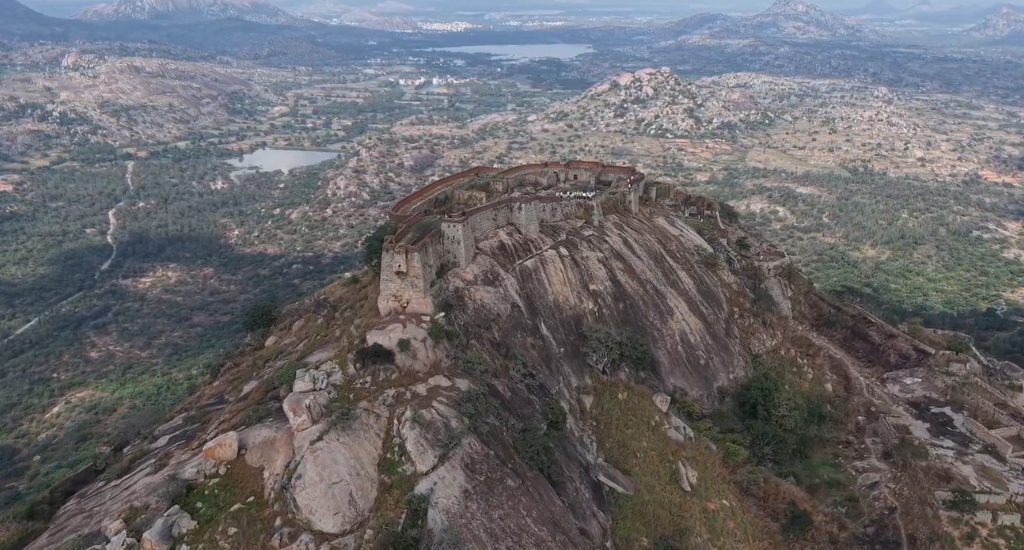
A chance encounter gets an ancient fort a new lease on life
A chance discovery of an early 16th-century ancient fort near Bengaluru during a trek inspired a community to restore it.

A chance discovery of an early 16th-century ancient fort near Bengaluru during a trek inspired a community to restore it.
A crumbling fort hidden under overgrowth in a forest near Bengaluru is seeing a reversal of fortune, thanks to the efforts of an inspired community of history lovers. Left to decay for nearly two centuries, it would have stayed in the shadows if not for a group of trekkers who stumbled upon it and decided to explore.

The fort happened to be the historic Channarayana Durga fort, dating back to 1513, located about 100 km from Bengaluru in Koratagere taluk in Tumkur district of Karnataka. Among the trekkers was Rajesh Mysore, director, WMG Group. The discovery became a catalyst for him to take on the mammoth restoration task as part of a CSR project.
Also read: Key Monastery – The Crown Jewel of Spiti
Recalls Mysore, “We came across Channarayana Durga fort during a trek–just a bunch of us exploring–and we saw parts of it crumbling. We went back a few times only to see more damage. We realised that nobody was looking after it. Even the locals didn’t know much about it.”
Now, thanks in part to the tireless efforts of historian Dharmendra Kumar, popular for his YouTube channel and Facebook page “Mysurina Kathegalu” (Stories of Mysore), the fort is on its way to reclaiming its lost heritage.
It doesn’t stop at the Channarayana Durga fort. It is just one among 72 such forts around Bengaluru that are on the WMG Foundation’s list to be restored to their past glory.
And it doesn’t stop at the Channarayana Durga fort. It is just one among 72 such forts around Bengaluru that are on the WMG Foundation’s list to be restored to their past glory.

With the Vijayanagara empire dominant in the region from the 14th to 16th century, and local chieftains or palegars under them who built their own forts, each structure tells a unique story.
Due diligence is needed before adopting a fort for restoration. Mysore explains, “Before we move ahead, we have to ensure that the fort doesn’t come under the ASI (Archaeological Survey of India), the forest department (because many are in forest areas), the local government (Zilla Panchayat), or Muzrai (if there’s a temple inside the fort). If ASI says it’s on their list, we can’t touch it. If not, we move ahead. The forest department ensures we don’t cut trees or disturb wildlife. Mujrai takes care of temples, and the local government permits us to go ahead.”
“We started talking to historians, trying to understand its past. It took two or three years to finalise our list of forts,” he adds.
Restoration, the WMG Foundation believes, is not just about repairing structures, but also about rekindling public interest in history. The movement, known as Namma Kote or “Our Fort”, actively involves locals, corporate professionals, trekkers, and history enthusiasts.
Also read: The quirky village that straddles two states

Visiting these ancient monuments increases awareness, promotes sustainable tourism, garnering more support for heritage conservation.
The WMG Foundation is focussing on preserving Bengaluru’s historical treasures, reviving dilapidated structures, bringing their historical importance to light, and promoting them as landmarks of history and pride for local communities.
As for the Channarayana Durga fort, the ongoing efforts have already led to the restoration of the majestic hill fort. The occasion was marked by an event in December 2024.
Restoration isn’t overnight work, remarks Mysore. “One fort could take 30-40 years to restore; we can’t fix it all in one go. We start by clearing out the overgrown trees so that the roots don’t bring the walls down. Next, basic masonry work is done to prevent further collapse. We plan on bringing in experts from Rajasthan to use heritage-friendly materials. The hardest part is generating funds. So far, WMG Foundation, along with a few other CSR sponsors, have supported the journey.”

So far, it has been a community effort. He adds, “Many people are involved–locals, CFOs (Chief Financial Officers) from our network, trekkers, history lovers. More visitors mean more awareness and thus more support. During the celebration of our first phase completion, local workers, who’ve been restoring the site for a year, were honoured. We’re all proud of our achievement. This isn’t just a project; it’s a movement to bring history back to life.”
Also read: The first green village of India – Khonoma
The lead photo on top shows the majestic Channarayana Durga fort in Koratagere taluk of Tumkur district in Karnataka, which is being restored by the WMG Foundation. (Photo courtesy WMG Foundation)
Anuradha Varma is a freelance journalist and hosts the podcast Swishing Mindsets.